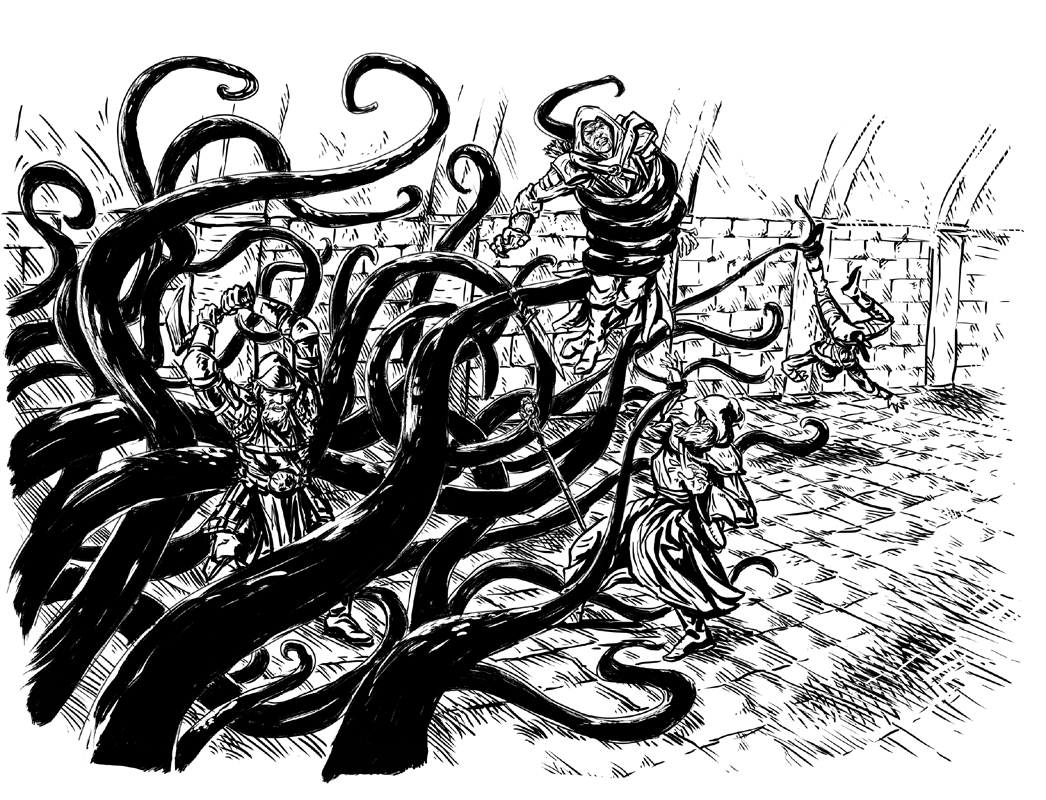One of my players recently sent me the link for a jolly interesting conversation on the Paizo message boards. The thread was so interesting—and the generally suggested “rules fix” was so awesome—I immediately implemented it in my Borderland of Adventure campaign as a house rule.

The thread in question discusses how GMs deal with Knowledge checks made by PCs to identify monsters. This is one of those areas in the core rules that many GMs handle differently.
While the basics of the rule are clearly spelled out: a PC learns one piece of interesting or useful knowledge about the monster for each 5 points by which he exceeds the DC required to identify the beast.
But what information?
Sometimes the information gained can be less than useful. I once, for example, played under a GM notorious for giving out pointless information about the monster. For example, who cares about its mating rituals or diet (or whatever) when it’s trying to rip your face off?
The solution suggested in the thread is both genius and simple: for every 5 points by which the PC exceeds the DC required to identify the creature he can ask one question. So for example, the player could ask:
- What overcomes the creature’s damage reduction?
- Does the creature have spell resistance?
- What is its most powerful special attack?
For myself, I’d like to keep these questions relatively specific. Here are some questions I am unlikely to answer:
- What are all its spell-like abilities?
- What is it particularly skilled at doing?
- What attacks or energy types is it particularly vulnerable or immune to?
I like this system because it rewards player skill and attention and gives the player a measure of control over what information he gains. For example, a wizard plotting his next spell may care more about the monster’s potential spell resistance than what weapons he needs to get through its damage reduction. A rogue or cleric will probably have different concerns.
Related Articles
- House Rules Musing: Disarming Magic Traps
- House Rules Musing: Mega Super Accurate Fireballs
- House Rules Musings: Serious Scarring
What Do You Think?
Do you like this system? Do you hate it or use something different? Let me know in the comments below!
That’s how I’ve been running my home game for a year now. And how my local PFS lodge does it too.
The only change I’m gonna make is rather than, showing the picture of the creature, the player asking ‘what do I know about this’, and my saying give me a knowledge X. I’m gonna have the player, on his turn, roll any/all knowledge checks he wants. If makes the minimum DC on the appropriate skill, show the pic, and then do the 1 question for every 5 pts.
There’s just too much a player who fails a roll can learn (metagaming) by my saying ‘roll knowledge religion’.
I’ve brought this line up before here, but this is a case where 4th-edition D&D did something right (somewhat). In every monster type’s entry, after the descriptions, was a Lore section. It stated what skill was relevant, then a list of DCs with information. Even the base result gave something useful — the name, of course, but also something about the creature’s nature. Higher results listed things like immunities, particularly dangerous attacks, or unusual tactics.
Granted, some entries only had a single item that gave a rough description. Nonetheless, it still had the “here’s the answer to that question” part covered.
I think WoTC started doing this in 3.5; I’ve a strong recollection of this kind of information in Monster Manual V! Of course, the “problem” with this approach is that the information gained in standardised. This may or may not be a problem of course–hence the quotation marks!
It’s a good way of doing it, reminds me of how knowledge skills and such like are handled in Dungeon World, the result allowing the player to ask the GM a series of questions.
I also run this rule at home, however I have found newer players tend not to know what kinds of questions are useful to ask. As such, I usually also allow players to ask me to give them useful information. It’s a good opportunity to show how the house rule can be useful and what kind of information might be available.
What’s the DC to identify?
The DCs are as in the core rulebook so it depends on the rarity of the creature and its CR.
This is where my players actually shine in role-playing. They almost enjoy failing a knowledge check and using misinformation to add “shock” value to their character experience. They will attribute abilities to creatures that don’t have such attributes and vice versa. It’s hard to fairly arbitrate a game when the group enjoys being wrong so much. We are here to have fun. That’s why we play, right? I love this aspect of Dungeons and Dragons3.5,( yes, 4th…a little ) 5th edition, and Pathfinder.
I was recently introduced to this rule by another GM and found that it works for a lot of knowledge based skills – including magical items.
Remember the joys of failure! What do I mean? Back in the day, GMs rolled most of a thieve’s ability checks; especially check for traps. Yes t added a lot of tension, not knowing how poorly you might have done.
There is no reason not to roll this one in secret as well.
If they fail the check, give them one question and answer it wrong. Roll a one -to me this is a new brainer exception to the no botched skill roll- give them a couple of wrong by answers. Two characters check, give one the right answer and the other the wrong answer. Remember to smile as you do it.